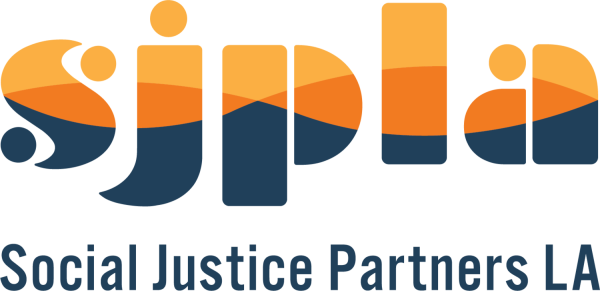In Case You Missed It: This article is from our November 2012 edition of our newsletter “Free-Range Thinking” originally authored by Andy Goodman. When attention-spans are fragile and time is of the essence, presentations of any kind must be top-notch! Here are five questions to answer in a perfect fast pitch.
The 5 Parts of the Perfect Pitch
You’ve got a handful of minutes to pitch your nonprofit. What do you say? What do you leave out? Whatever you do, make sure you answer these five questions.
It’s a moment that nonprofiteers dream about yet also secretly dread. Whether by luck or design, you find yourself face to face with a VIP – a Very Important Prospect – someone who can help your organization in a big way. Invariably, this VIP (a) is only vaguely familiar with your work, and (b) has only a few minutes to spare. “So, what do you do?” the VIP asks, not-so-surreptitiously glancing at her watch. What do you say?
For the last five years, Los Angeles Social Venture Partners (now the Social Justice Partners LA) has been preparing nonprofit leaders for this moment through a unique program called The Social Innovation Fast Pitch Competition. Over eight weeks, participants in this program are trained in the art of telling their organizational stories in precisely three minutes. The training culminates in a competition with $45,000 in awards for the best pitches.
The program has proved so popular that Social Venture Partners chapters in nine cities have replicated it, and I’ve had the privilege of coaching participants in Los Angeles, Seattle and Pittsburgh over the last three years. Having witnessed dozens of pitches, I’ve had a firsthand look at what works (and what doesn’t) in this high-pressure scenario.
From my perspective, the best pitches answer five questions. The order of the answers and the amount of time devoted to each can vary, but every question must be addressed if you’re going to tell the whole story:
Who are you?
 This is always the first question in your audience’s mind, and an answer such as, “I’m the executive director of People for Good Things” may be sufficient. In some cases, though, your personal history may directly relate to your organization’s mission and is worth including.
This is always the first question in your audience’s mind, and an answer such as, “I’m the executive director of People for Good Things” may be sufficient. In some cases, though, your personal history may directly relate to your organization’s mission and is worth including.
John Sullivan, a finalist in LASVP’s 2010 competition, represented a nonprofit advertising agency housed within a drug treatment center. His pitch began with this stunning answer to question #1: “My name is John Sullivan. I’m an Eagle Scout, an ex-convict, a recovering heroin addict, and the founder and creative director of BTS Communications.” The rest of his pitch was equally compelling, and there was little surprise at the end of the event when the judges handed him a $10,000 prize.
What problem does your organization solve?
Note that this question does not ask, “What do you do?” Too often, nonprofiteers will gladly describe their programs and services – often diving deep into the weeds in the process – but what remains unclear is exactly how (or even if) these efforts solve the problem.

Photo by Lena Khrupina
Rick Nahmias, founder of Food Forward, used the opening of his pitch to answer this question: “In January 2009, while walking my dog Scout around the neighborhood, I’d see pound after pound of citrus fruit rotting in driveways or carried off by squirrels. My neighbor’s tangerine tree was full, food pantries were empty, I got an idea. With a single volunteer recruited from Craigslist, from 20 feet up, I saw yard after yard of fruit unpicked. Three months later, Food Forward was born.”
What is distinctive about your solution?
To say “we help more students graduate” or “we break the cycle of homelessness” or “we protect valuable habitats” is a start, but it’s not enough. If other nonprofits are working on the same issue – and it’s rare that you’ll have an entire field to yourself – you have to make it clear what makes your approach different and even preferable.
Imagine LA is one of several organizations addressing the problem of homelessness in Los Angeles. To ensure that it stood out in a crowded field, President and CEO Jill Bauman opened her pitch by addressing that question head on: “Did you know that in Los Angeles there are 8,000 homeless families? Remarkably, also in Los Angeles, there are 8,000 faith communities: churches, synagogues and mosques. Imagine LA’s vision is to match each family with one faith community in such a way that the family permanently exits homelessness and the children thrive. Eight thousand plus eight thousand equals zero, a simple yet powerful equation.”
What evidence can you offer of impact and sustainability?
Once your audience has a clear understanding of your organization’s unique approach to a particular problem, they’ll want evidence that your work is making a difference. Be careful, however, that you demonstrate clear progress (i.e., outcomes) and not just measures of your effort (i.e., outputs).
Girls and Gangs is an LA-based nonprofit serving girls in the juvenile justice system. When Dawn Brown was executive director in 2009, her pitch included this information: “Last year we served 340 girls ages 12-18 with only 3 staff members. We do this at an average yearly cost of $1,000 per child. It costs the county$45,000 to incarcerate that same child.” The cost differential is impressive, but all these numbers do not add up to evidence of impact.
Fortunately, later in the same pitch, Brown added this: “The experts say if you can keep one-third of the girls [from returning to jail], you’re doing well. Last year, we kept two-thirds out.” Now that’s evidence of impact.
What do you need now, and how will it help?

Photo by Pixabay
Whether you’re ultimately asking for advice, time, money, or all of the above, it’s the second part of this question that’s critical. VIPs, like everyone else these days, are overwhelmed with requests for help. It’s not enough to be clear about what you need. You must also make it clear how their help will make a critical difference.
Caroline Kunitz of LA Diaper Drive, a nonprofit that supplies disposable diapers to families that can barely afford them, was a double award winner at LASVP’s 2011 competition. Her pitch ended by answering this fifth question: “We’re requesting $200,000 for the next two years. This will allow us to hire staff, fund-raise, get a permanent warehouse, and buy more diapers at our incredible discount of 65% off the store price. LA Diaper Drive already has a broad audience. Imagine what we could do with funding.” And then she added the clincher: “I guarantee: families and tushies across Los Angeles will thank you.”
Special thanks to Diane Helfrey and all the partners at LASVP for their help with this article.
Level up your presentation skills for pitches, meetings, and more in our Platinum Rules of Presenting class coming this January 24th & 26th, 2024!

